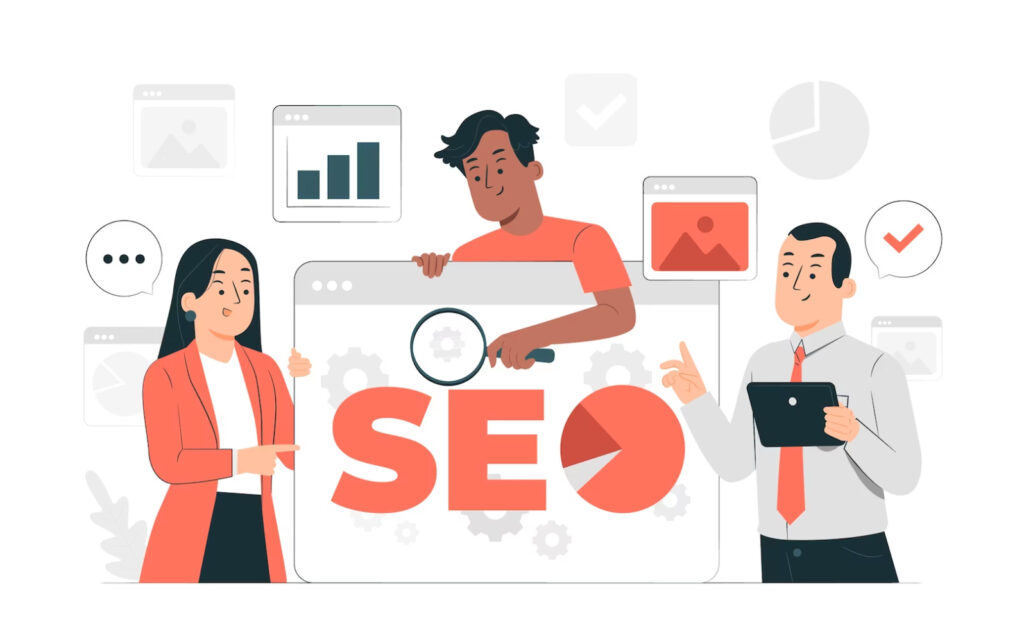SEO optimization is crucial for improving website rankings and attracting organic traffic. Page builders offer a convenient and effective way to implement SEO strategies that can significantly boost your search rankings. This blog post will guide you through the process of using page builders to optimize your website for better search engine visibility.
Choosing SEO-Friendly Page Builders
When selecting a page builder, consider factors like ease of use, platform compatibility, and flexibility in implementing SEO elements. Look for page builders that allow you to customize meta tags, URLs, and effortlessly create SEO-friendly content.
On-Page SEO Techniques with Page Builders
Customizing Meta Tags and Title Tags
Craft unique and compelling title tags within 70 characters, incorporating relevant keywords. Your title tags are essential for attracting users and search engines to your content. Use keywords that accurately represent the page’s content and relevance to the search query.
Write meta descriptions within 160 characters, highlighting the page’s content and value. A well-crafted meta description can entice users to click on your link in search results, leading to increased organic traffic.
Optimizing URL Structures
Use descriptive and concise URLs that include primary keywords. Clear and relevant URLs not only help search engines understand your content but also make it more user-friendly.
Avoid lengthy URLs with unnecessary parameters. Shorter URLs are easier to share, remember, and display in search results, improving the overall user experience.
Creating SEO-Friendly Content
Focus on high-quality, relevant content that aligns with your target keywords. Valuable content is essential for engaging visitors and encouraging them to stay on your website.
Utilize page builders’ content blocks to organize text, headings, and lists effectively. Well-structured content is more appealing to readers and search engines, leading to improved rankings.
Utilizing Heading Tags Appropriately
Structure your content using H1, H2, H3, etc., heading tags to provide clarity to search engines and users. Heading tags help establish the content hierarchy and make it easier for search engines to understand the context of your content.
Image Optimization with Page Builders
Compress images to reduce file size without compromising quality. Large image files can slow down your website, affecting both user experience and search rankings.
Add alt text to images, including target keywords and descriptive text for accessibility and SEO benefits. Alt text helps search engines understand the content of images, contributing to improved image search rankings.
Mobile Responsiveness and Page Speed
Ensuring Mobile-Friendly Pages
Use mobile-responsive page templates provided by page builders. Mobile-friendly pages are vital for reaching a broader audience, as more users browse the internet on mobile devices.
Test your website’s mobile compatibility on different devices. Ensuring consistent performance across various screen sizes and devices is crucial for retaining users and boosting rankings.
Enhancing Website Speed
Optimize image sizes and formats to reduce loading times. Faster-loading pages lead to better user experience and higher search rankings.
Minimize HTTP requests and enable browser caching for faster page rendering. Reducing the number of requests helps accelerate page load times, resulting in improved website performance.
Technical SEO Integration
Implementing Schema Markup
Use schema markup to provide search engines with structured data about your content. Schema markup enhances your search results’ appearance with rich snippets, improving click-through rates.
Generating XML Sitemap
Create an XML sitemap and submit it to search engines to help them index your pages efficiently. Sitemaps provide search engines with a clear map of your website’s structure, ensuring all pages are discovered and indexed.
Handling 301 Redirects
Implement 301 redirects when restructuring your website to maintain link juice and prevent broken links. Properly handling redirects ensures that users and search engines find the new location of your content.
User Experience and Engagement
Designing User-Friendly Layouts
Use intuitive navigation and clear calls-to-action for a seamless user experience. A user-friendly layout encourages visitors to explore your site further and improves overall engagement.
Opt for responsive designs that adapt to various screen sizes. Responsive websites provide a consistent experience across devices, positively impacting search rankings.
Adding Interactive Elements with Page Builders
Incorporate interactive elements like sliders, accordions, and forms to engage visitors. Interactive elements enhance user engagement and can increase the time users spend on your website.
Keep these elements optimized for mobile users. Ensure that interactive features work seamlessly on mobile devices to maintain a positive user experience.
Reducing Bounce Rate:
Offer valuable and relevant content that matches users’ search intent. Addressing user intent leads to higher user satisfaction and reduced bounce rates.
Improve page load speed to reduce bounce rates. Fast-loading pages decrease the likelihood of users leaving your site prematurely.
Tracking and Analyzing SEO Performance
Utilizing Analytics Tools
Integrate Google Analytics or other SEO tools to track website performance. Analytics tools provide valuable insights into user behavior, traffic sources, and conversion rates.
Monitoring Keyword Rankings and Organic Traffic
Keep track of keyword rankings to identify areas for improvement. Monitoring keyword performance helps refine your SEO strategies.
Observe organic traffic trends to assess the effectiveness of your SEO efforts. Understanding traffic patterns can guide further optimization initiatives.
Making Data-Driven Improvements
Analyze the data to make informed decisions for continuous SEO optimization. Data-driven improvements lead to better results and more effective strategies.
Adjust your page builder strategies based on performance insights. Continuously adapt your SEO approach to stay ahead in the competitive landscape.
Conclusion
Implementing SEO optimization with page builders can significantly enhance your website’s search engine rankings and attract organic traffic. Remember to choose SEO-friendly page builders, follow on-page SEO optimization best practices, and focus on providing an excellent user experience. By tracking your SEO performance and making data-driven improvements, you’ll be well on your way to achieving higher search rankings and online success.


